Trump’s Two Bodies
How have we come to accept a compulsively lying felon as a potential president?
Susan:
Trump and Biden had a “debate” this past week. The big takeaway, for panicky Democratic operatives, political pundits, and the mainstream media, was how old, frail, and shaky Biden appeared. Party insiders huddled, considering the possibility of replacing Biden, and The New York Times editorial board declared in a bold-headlined opinion, that “To Serve His Country, President Biden Should Leave the Race.” The tsunami of bald faced lies, absurd projections, and linguistic incoherencies that spewed full-force from Trump’s mouth for ninety minutes made no headlines. Few papers fact-checked his performance and those that did employed their usual “balance” nonsense, listing what Biden got wrong alongside Trump’s lies, as though they were equivalent. The truth is, were they to have thoroughly exposed every Trump lie, it would have required pages of text. Making the big story out of Biden’s weak performance, they ignored the fact that Trump’s verbal diarrhea and lack of regulation over his emotions, which became more unhinged as the debate went on, might have been seen as themselves symptoms of aging. But, as usual, he conned us through image rather than reality.
The “age issue” doesn’t touch Trump because he’s managed to create a mythological alternative body—part warrior, part monarch, part Christ, part the character he played on “The Apprentice”—that’s immune to the normal biological processes that affect mere mortals. And, like the grandiose ad copy that sells other commodities, it’s the fantasy—not the actual man, who is a paranoid narcissist without a moral center—that those who buy the Trump product fall for.
Simon:
Narcissism is at its heart a set of strategies with a function: to achieve power, admiration or control. Some use these strategies very rarely, and some develop them early in life, as their main way of managing themselves and their relationships. Online, and in self-help books we become familiar with the perpetrator face of narcissism, but there is also a performance face. And for some, both the perpetrator and performer faces can be found.
Core to the phenomenon of pathological narcissism, is persona or image. In extreme cases, the image is constructed so forcefully and elaborately that it becomes a kind of product. Clothing, accessories, real estate, powerful associates and positions of status can all be employed as parts of the image. In modern times, a TV or film production company may assist in creating this image.
Susan:
The first Trump fantasy-figure to run for president was the persona he had created on “The Apprentice” and “Celebrity Apprentice.” That Trump was both a fabulously successful businessman (in the first episode he addressed viewers: “I’m the largest real estate developer in New York. I own buildings all over the place, model agencies, the Miss Universe Pageant, jetliners, golf courses, casinos, and private resorts like Mar-a-Lago, one of the most spectacular estates anywhere in the world”) and a wise, fatherly, somewhat stern yet dependably rational boss, who fired contestants reluctantly. While the contestants competed ruthlessly and often nastily with each other — always with at least one loose cannon in the bunch — Trump and his children appeared, in contrast, as calm, businesslike managers
.
That was one persona. Then, for months during the primary, all we heard was what a “straight-shooter” Trump was, how “authentic,” how he “told it like it is.”
This became the favored Trump “narrative” for so long that no-one bothered to worry whether anything he said was true or not. It was the perfect concordance between a candidacy and the postmodern world, in which the relevant question is rarely “is it true or false?” but rather “How is it playing?” In this world of optics and appearances, pundits stopped wondering about who the “real” Trump was, and became more interested in charting or predicting “reboots,” “resets,” and “pivots.” Only Donnie Deutsch, the ad man (who perhaps knows a bit himself about pitching and selling) raised the issue of whether or not any Trump “do-over” was to be trusted. This was early in the game. We now have massive evidence that under the appearances, there is a constant that is unable to “pivot”: a dangerously reactive, self-absorbed, self-aggrandizing bully who is utterly unequipped for the job of president. That should have been the “story” all along. But he’s still conning us into the world of his self-made alternative realities.
A key to understanding Trump is that he lives in the world of the advertisement, where everything is a pseudo-reality. From an early age, he’s never operated on the register of true/false—that distinction has no meaning for him. What has meaning is whether you can sell it. And, like a true Ad Madman, you try things out and see whether they work or not. You come up with what “feels” like a winning pitch, what makes your product (in this case, himself) look good. You stick with what works and revise what doesn’t. And then you spread the winning approach as widely as you can.
“Lying” has no meaning, and fact has no purchase on him. And everything—even the mug shot that brands other people negatively—is an opportunity to construct and promote (and in the case of the mug shot, merchandise) a projected image of the self. The “liberal” media was both naive and cooperative in this, blasting the mug shot over page and screen, imagining that it would brand Trump as a criminal. Trump knew better. He’d adopted a pose that would be iconic and ready-made for merch selling him as a warrior. (He’s also currently trying to use it to sell Black voters—who he presumes, racist that he is, to have a personal experience of arrest—that he has a “bond” with them.)
Trump instinctively—without any historical knowledge—employs a strategy that monarchs have employed for centuries. Their portraits functioned as advertisements, posed and loaded with symbols that signified their God-authorized fitness to rule. The symbolism could include inscriptions, emblems, mottos, relationships with other people, animals, or objects, and it could also be written into the body itself. A famous example is Hans Holbein’s sketch of Henry VIII—the painting itself was destroyed in a fire—with the king posed to emphasize his power, authority, and resoluteness: legs spread and firmly planted, broad shoulders, one hand on his dagger, and a very visible codpiece (larger, art historians have noted, than portraits of other men at the time.) His stance, as Suzanne Lipscomb points out, “mimics the stance of a man standing in full armour…sparking associations with martial glory.”
Did Henry look like this? Portraits from the early years of his reign show a young man that bears little resemblance to the powerful giant, and some visitors to the court remarked that his good looks—which of course were constantly commented on—were somewhat feminine. But whatever he looked like in his youth, by the time Holbein painted Henry, he had a badly ulcerated leg and a waistline that required a new armor fitting. He may also have suffered from the effects of a bad fall and intermittent erectile dysfunction. The Holbein Henry is the king that we recognize as Henry VIII not because we know that it is an accurate representation but because it has been reproduced so many times. And it has been reproduced so many times because of its perfect fusing of the body of the king and the idea of his Kingliness.
As medievalist Ernst Kantorowicz would describe it, there are thus actually two Henry VIII bodies depicted in the Holbein: One is a mortal, flesh-and-blood man—the king’s “body natural,” which just like every other mortal body is subject to physical defects, disability, aging, disease, accidents, and death. The other body is an enduring, ageless icon of masculine power and authority. His leg is as sturdy and pain-free as in his youth, his mind is uncluttered by remorse or uncertainty, he is ever potent, ever the warrior.
Simon:
How does narcissism theory explain the elaborately constructed grandiose image? The image has a primary function: to separate the person from any experience of vulnerability or shame. Such feelings have become, to this person, like a spider to an arachnophobe. In extreme cases, they have to be avoided at all costs. The person comes to mentally experience their image more and more, and their real self less and less. There develops over time a separation between the image and the real body – with all its vulnerable feelings.
This function of the image puts some constraints on what it needs to look like. It cannot be a vulnerable image. It must be charismatic, commanding, knowing, dominant. And it must appear shameless. Is the icon themselves ‘shameless’? Not exactly. The emotional system called shame (it does have its uses) has not been surgically removed. But the person has become disconnected from it. Shame can no longer be experienced. They will appear ‘conscience-free’. Likewise, they have become disconnected from all other vulnerable feelings (despite what they might claim about their romantic life).
Image is constructed also to provoke, in others, a reaction that will bolster this distance from vulnerability. Whilst the real self is lost and undeveloped, the image must become bold and distinct. Others must admire, idealise, follow, submit or congratulate. And they do, at least, whilst the strategy is working as intended. Being untroubled by shame and at the same time having to avoid judgment, is a difficult line to walk, unless like Henry you are above the law.
Susan:
A particularly clear example of the masking of the mortal, vulnerable body with symbolic trappings is Henry’s codpiece. It houses a flesh-and-blood penis, which engages in (and can fail at) the biological functions of sex and reproduction. But as ostentatious armor for that flesh-and-blood organ, it transcends the biological to symbolize the magisterial phallus, invulnerable, unchangeable, always upright and at the ready—and in early modern portraits, intentionally so. (Patricia Simons calls it a “surrogate political weapon.”)
Nowadays, men don’t usually wear codpieces—at least not for protection. But the phallus still operates as a symbol of masculine power, as Trump acknowledged, embarrassing himself with his reactions to various jibes about his small hands, most recently referred to on the cover of The New Yorker.
The poke at Trump’s hands that most people would remember is Marco Rubio’s, during the 2020 contests for the GOP nomination:
“He is taller than me, he's like 6' 2", which is why I don't understand why his hands are the size of someone who is 5' 2"," Rubio joked. "Have you seen his hands? And you know what they say about men with small hands -- " [The crowd erupted with laughter]
" -- You can't trust them,"
A man with a sturdier ego would have let it go. But, as Grayson Carter has said, “Like so many bullies, Trump has skin of gossamer.” At a rally, Trump mentioned “little Marco’s” comment, and bragged "Those hands can hit a golf ball 285 yards." (He bragged about his superior golf swing at last week’s debate, too, and even managed to drag Biden into the contest.) And at the 2016 Republican debate, Trump referred to the small hands insult again. "Nobody has ever hit my hands. I have never heard of this.” [Which was false]1 Then, he held his hands up to the audience: "Look at those hands. Are they small hands? And he referred to my hands -- if they are small, something else must be small."
"I guarantee you there is no problem," Trump affirmed. "I guarantee you."
*Wince*
Sometimes a cigar is just a cigar. But the world is also full of man-made objects—rockets, guns, skyscrapers—that have been “theorized” as surrogates for the phallus. (Phallus, not penis. The penis is a flesh-and-blood body part; the phallus is a symbol of masculine power and authority.) In this context, Trump’s obsession with the size of his buildings is laughable. Could he be more transparent?
“Of the many rivals Donald J. Trump has accumulated over four decades in business and, now, presidential politics, one of the earliest was a New York City skyscraper with the boldness to stand taller than his own.
In 1979, as Mr. Trump inspected a model of the black-and-gold Fifth Avenue high-rise that would come to serve as his home, office, fortress and personal monument, he could find only one flaw to spoil the moment: the General Motors building, which, in real life, was 41 feet higher and a few blocks away from the future Trump Tower.
“My building looks a little small,” he said, according to Norman Brosterman, the model maker’s assistant at the time. Assured the scale was accurate, Mr. Trump had an inspiration on his next visit to the architectural workshop.
“Can you make my building taller?” Mr. Trump asked. No, he was told. “Well, can you make the G.M. building shorter?”Mr. Trump marked the G.M. building at his preferred height with a pencil. Mr. Brosterman sawed off the top third, leaving Trump Tower — in the one-thirty-second-scale model, at least — the tallest in the neighborhood.
“Trump said, ‘Great,’ and left,” Mr. Brosterman recalled recently.
In real life, Trump Tower could not be elongated. But Trump Arithmetic found a way.
Though the tower was built with 58 floors, Mr. Trump later explained to The New York Times that because there was a soaring pink marble atrium and 19 commercial floors at the bottom, he could see no good reason not to list the first residential floor as the 30th floor. The pinnacle became the 68th — the height that appears in marketing materials, online search results and news articles to this day…
He has tried and failed to develop the world’s tallest building at least three times. And when he wants his buildings to seem bigger than they actually are, he enlarges them the same way he has thwarted long odds and defied reality throughout the election season: with sheer bluster…
In time, creative numbering became almost as much of a building signature as the Trump name. Other tactics included counting underground parking lots and otherbelow-grade floors in the total, Mr. Korangy said.”
I love the choice of wording in this headline:
So many of Trump’s self-aggrandizing images would be laughable—if they weren’t so…ahem…potent. In an earlier stack, I discussed Trump’s successful campaign to win over the evangelicals—perhaps the weirdest alliance American politics has spurned. “What’s staggering/nightmarish,” I wrote, “is that not only did evangelicals vote for him, but in interviews before and at the caucus sites, they’ve spoken of Trump being God’s choice, compared him to David fighting Goliath, and described him as a martyr. Paul Figie, a pastor and a Trump caucus captain, declared Trump to be “ordained by God,” and is convinced that God himself will see to it that Trump gets back in office. “Trump is the guy to be in there, and amen.”
It didn’t stop with comparisons to Goliath. As Trump’s speeches became more and more biblical and his accusations of Biden “discriminating against people of faith” more fiery, evangelicals began to see Trump less as a disciple and more Christlike himself. A viral video, first posted to Truth Social and then played at rallies over the weekend, called “God Made Trump”(visual: baby Trump), describes Trump as the “vessel of a higher power sent to save the nation.”:
“God looked down on his planned paradise and said, ‘I need a caretaker,’ so God gave us Trump,” begins the video, which appears to use artificial intelligence to mimic the voice of Paul Harvey, a conservative radio broadcaster who died in 2009. Mr. Trump, it adds, “is a shepherd to mankind who won’t ever leave nor forsake them.”
During his current campaign, Trump has dived right into the comparison with Christ, most recently during a speech at the “Faith and Freedom Coalition” in which Trump threatened to take off his shirt (please no) to display not just his “beauty” but the wounds that he has suffered as God’s warrior.
“Together, we stood up to the communists, Marxists and fascists to defend religious liberty like no other president has ever done. And I have the wounds all over my body. If I took this shirt off you’d see a beautiful, beautiful person but you’d see wounds all over me. I’ve taken a lot of wounds, I can tell you. More than I suspect any president ever.”
Susan and Simon:
The idealized image, whether through Henry’s codpiece or Trump’s (falsely) elongated buildings as surrogates for the self, is one of a number of strategies that make up narcissism, in which judgment and shame must be avoided as a priority. A further strategy is to sit oneself in the judgment seat and cut down or devalue another. (My building is taller than yours. My golf swing is better than yours. I left office with a booming economy; you’ve destroyed that.) This taking down of the other may be in response to a challenge to the reality of the image. Or it might be in response to judgment that might provoke an experience of shame. Going on the offensive to cut down the image of others who pose a threat allows the narcissist to achieve distance from the vulnerability and shame that are so feared. Skill at verbal attacks becomes highly valued.
From last week’s debate:
What’s happened to our country in the last four years is not to be believed. Foreign countries – I’m friends with a lot of people. They cannot believe what happened to the United States of America. We’re no longer respected. They don’t like us. We give them everything they want, and they – they think we’re stupid. They think we’re very stupid people.
What we’re doing for other countries, and they do nothing for us. What this man has done is absolutely criminal.
Going through the transcript of last week’s debate, it’s striking that virtually every response by Trump begins with a self-aggrandizing claim and segues to an attack on Biden. This is just one example of many:
We had the greatest economy in the history of our country. We had never done so well. Every – everybody was amazed by it. Other countries were copying us…He has not done a good job. He’s done a poor job. And inflation’s killing our country. It is absolutely killing us.
For Trump, cutting down the other often involves a projection of his own crimes, inadequacies, and lies onto the other, as in his famous “You’re the puppet” retort to Hillary Clinton:
In Trump’s defense against the perception of inadequacy, truth has no value. On Roe V. Wade:
The problem they have is they’re radical, because they will take the life of a child in the eighth month, the ninth month, and even after birth – after birth.
If you look at the former governor of Virginia, he was willing to do this. He said, we’ll put the baby aside and we’ll determine what we do with the baby. Meaning, we’ll kill The baby….
….So that means he can take the life of the baby in the ninth month and even after birth, because some states, Democrat-run, take it after birth. Again, the governor – former governor of Virginia: put the baby down, then we decide what to do with it. he’s in – he’s willing to, as we say, rip the baby out of the womb in the ninth month and kill the baby.
Biden corrected him immediately: “He’s lying. That is simply not true. Roe v. Wade does not provide for that.” And of course, Biden is right. He’s not too old, as he said in a post-debate rally in North Carolina, to know when something is true and when something is false
It’s not clear that we can say the same about Trump.
Alexander Lowen makes a stark connection2 between the construction of an image and dishonesty in narcissism: “…in their use of an image that contradicts the truth of their being, they share certain similarities with psychopathic personalities. In this regard, they have lost the ability to distinguish truth from falsehood”. Lowen goes on to say of the hypothetical narcissistic man, that “his acting is convincing because he has become convinced. He identifies with his image, and this becomes his only reality; he no longer senses that he is distorting or denying the truth…The actor has become so identified with his role or pose that it has become real for him.”
Several weeks ago, Trump denied that he had ever said, of Hillary Clinton, “Lock Her Up!” People wondered: Is he simply a chronic, pathological liar? Or does he really believe in the false history that he had constructed for himself? Perhaps both, which is why he has so many people so confounded.
Simon Rogoff writes Narcissism, Trauma and Celebrity Substack
Nearly 30 years ago, Graydon Carter, the editor of Vanity Fair magazine, described Trump in Spy magazine as a “short-fingered vulgarian.”
In an editor’s letter in "Vanity Fair" last November, Carter said that he wrote the Sky magazine comment in 1988 "just to drive him a little bit crazy."
And according to Carter, it still does…
"To this day, I receive the occasional envelope from Trump. There is always a photo of him—generally a tear sheet from a magazine. On all of them he has circled his hand in gold Sharpie in a valiant effort to highlight the length of his fingers," Carter wrote. "I almost feel sorry for the poor fellow because, to me, the fingers still look abnormally stubby."
Lowen, A. (1997) Narcissism: Denial of the True Self. Touchstone Books





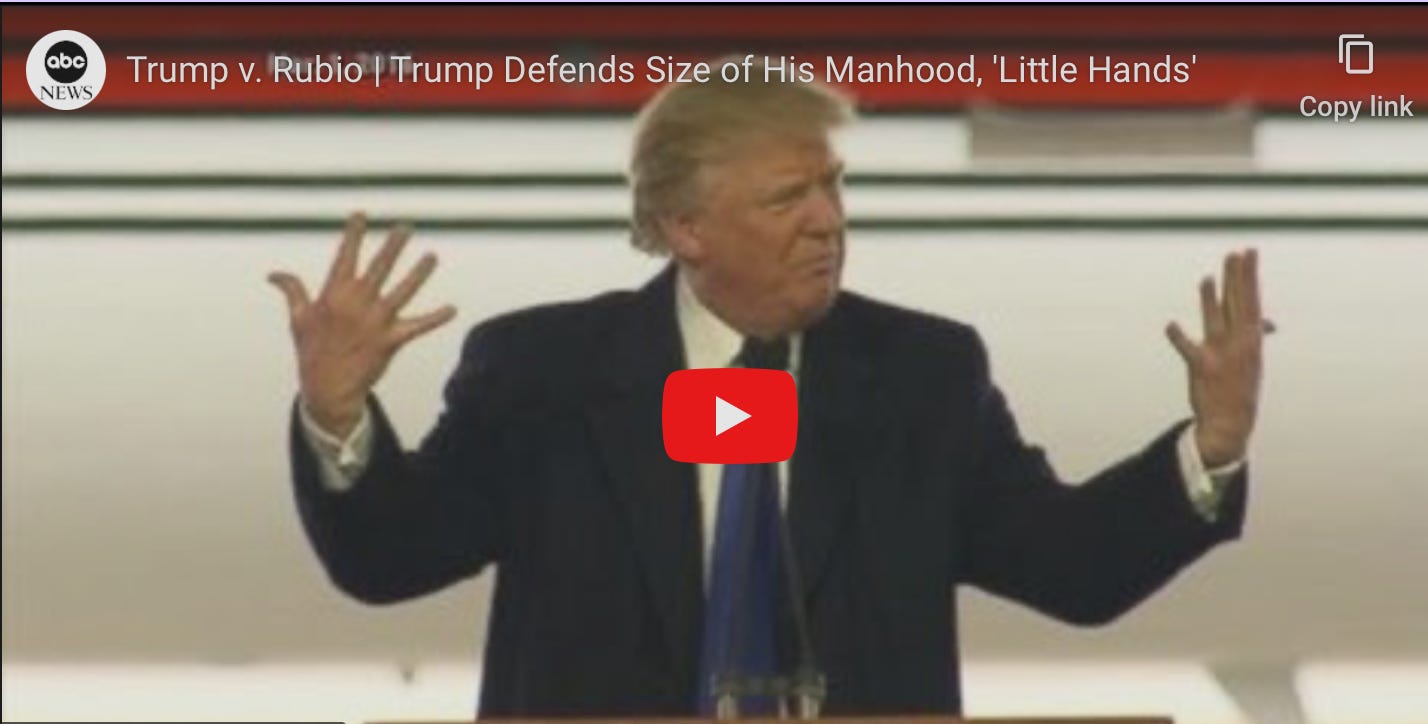
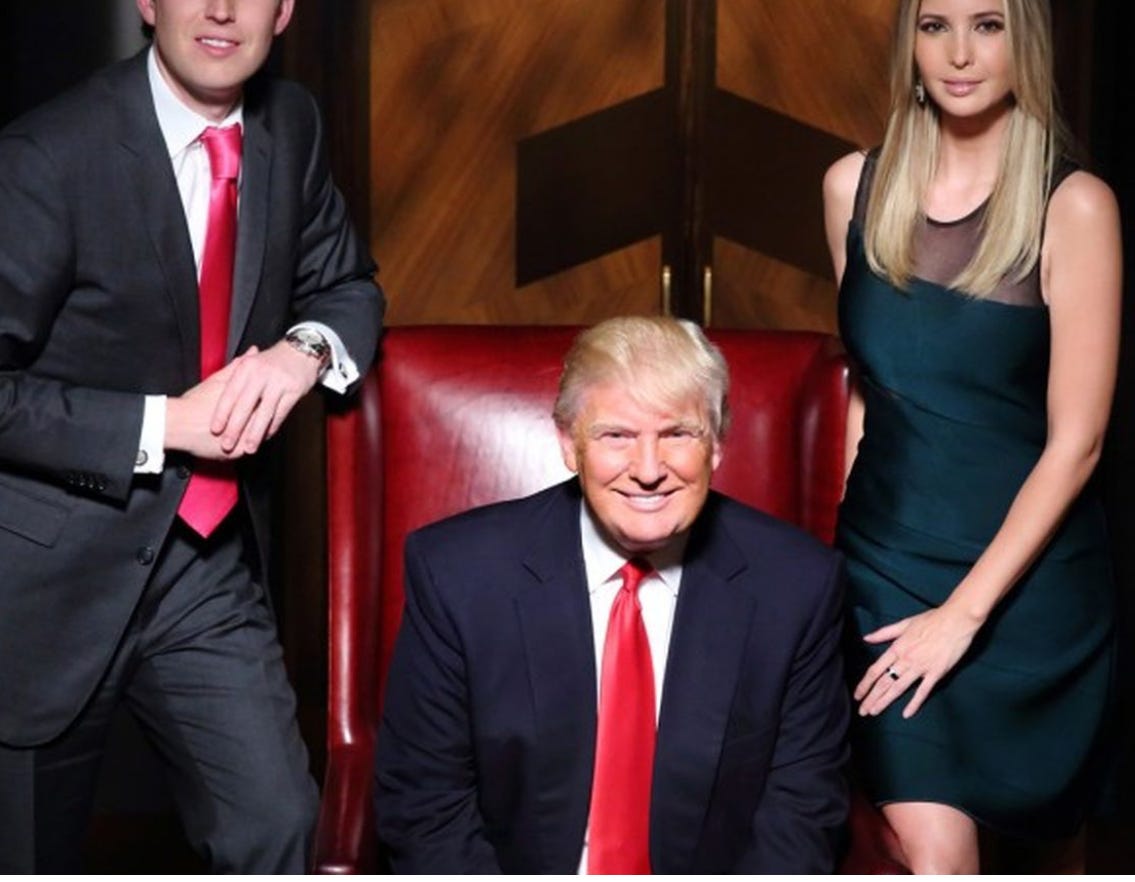
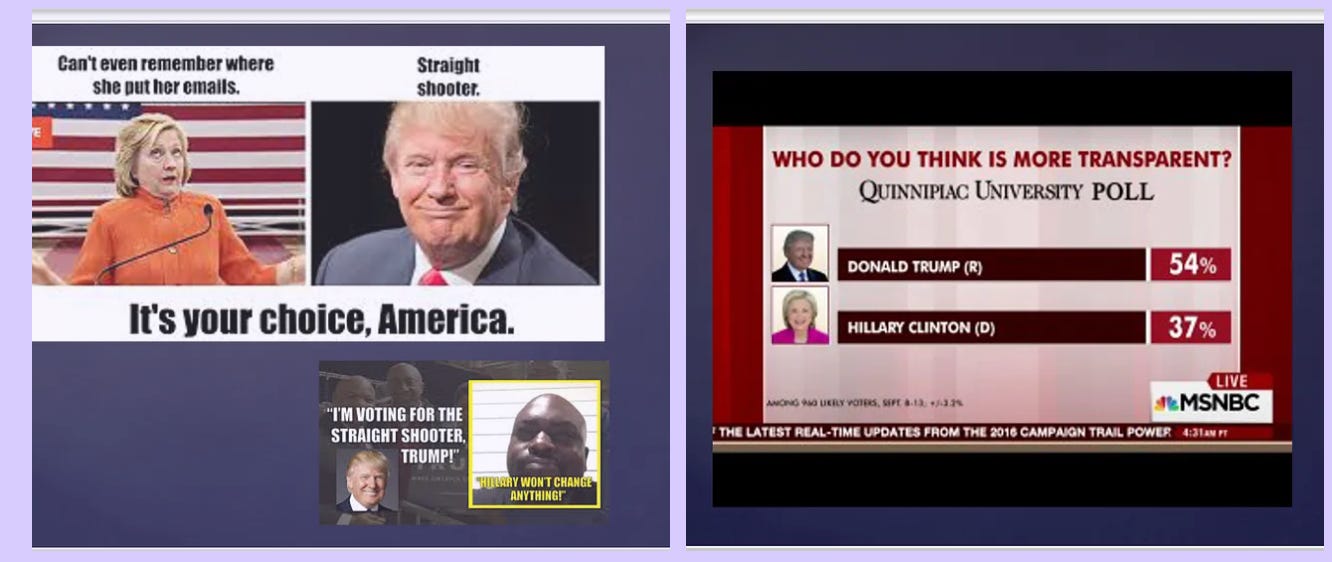


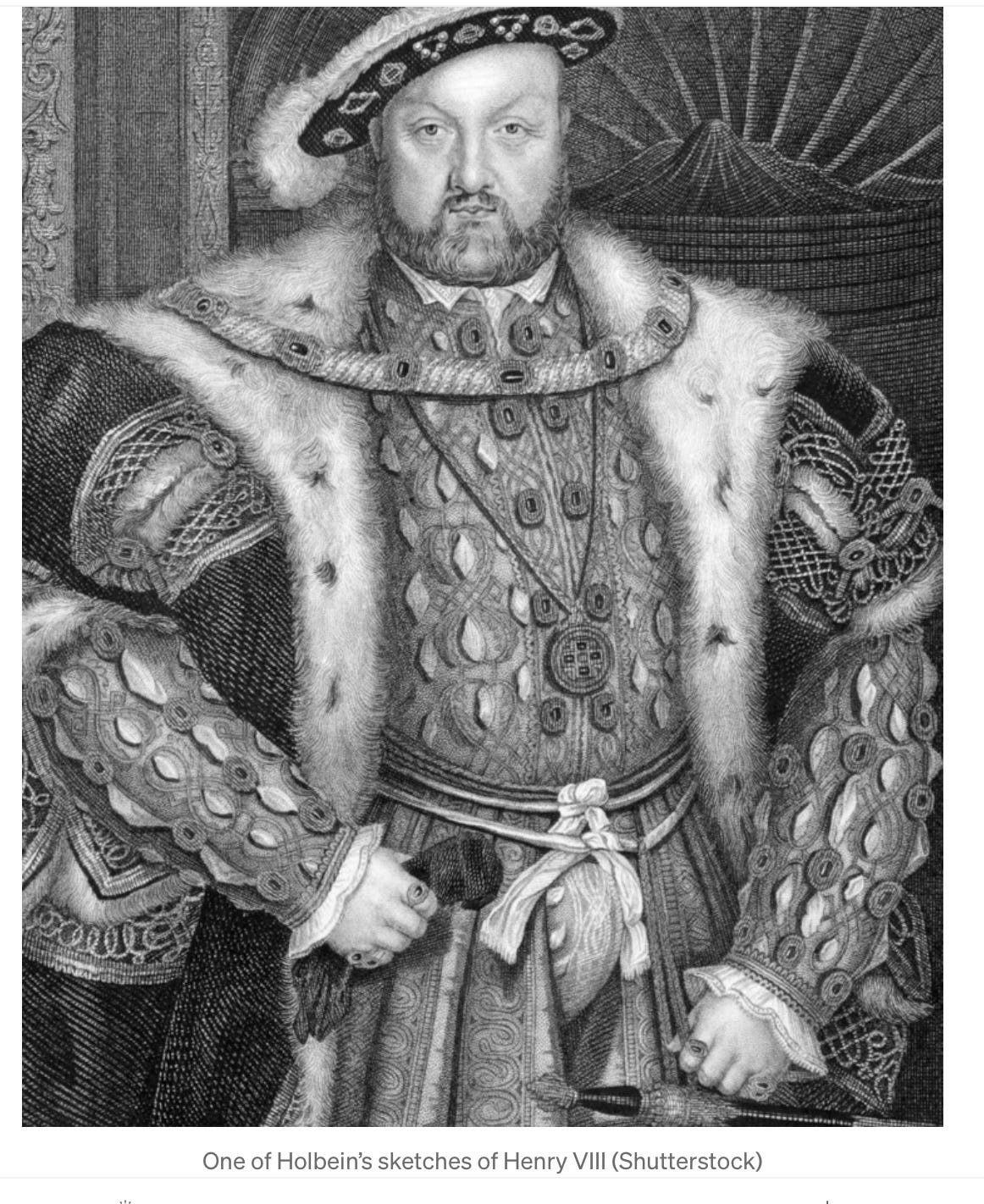


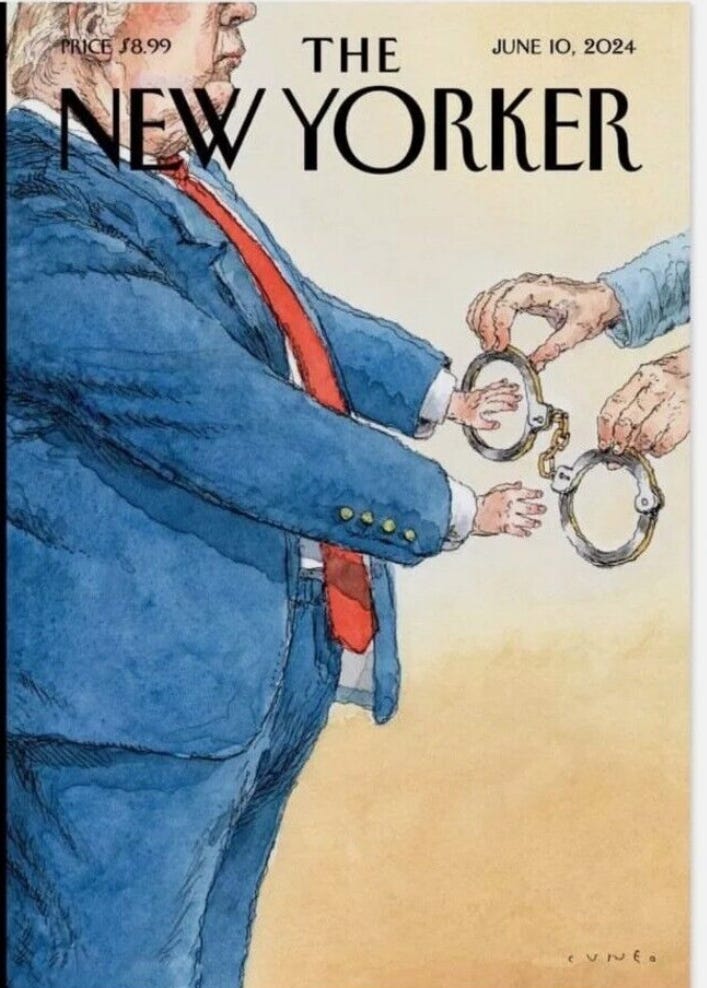


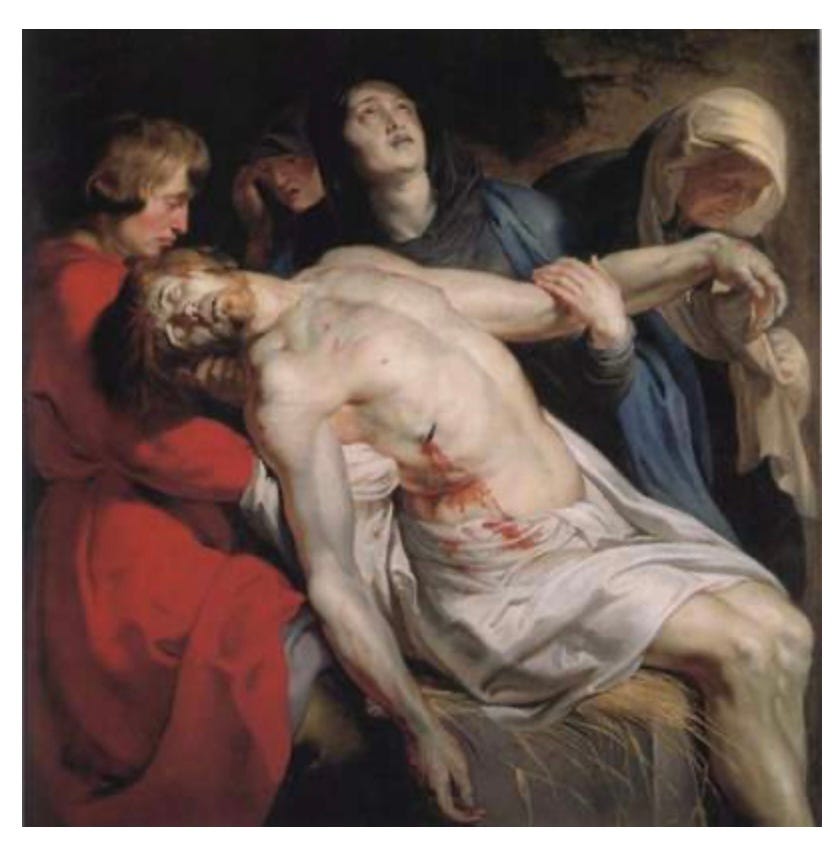

I'm glad you both focused on Trump's use of propaganda and how tightly it's linked to his narcissism. The comparison with Henry VIII"s well-known portrait is brilliant (that engorged codpiece!). Trump's lying performance should have been the lead story after the debate, no question. I've seen very few commentators point to how much the two-minute rule imposed by CNN played to his skill with sound bites and social-media rants – he always leads with a punch, the more outrageous the better, the perfect clickbait. The fact that even "serious" political commentators refer to him as "authentic" or a "straight-shooter" would be laughable if the implications weren't so depressing. He's a liar, people — say it again, if that makes it easier to put in a headline: *He's a liar.*
Meanwhile, there's Joe Biden. Susan, you and I likely disagree on what would be best for the country: I think Biden should step out of the upcoming election on his own terms, supporting Kamala Harris to maintain continuity and to allow her, the former prosecutor. to rip Trump to shreds. I doubt this will happen, but he deserves our respect and compassion for the job he's done — and I hate the idea of this Congress even starting to mutter about the 25th amendment.
I find this piece brilliant on the part of both commentators. Hitler studied propaganda. As you show advertising plus the projection of false images is a potent combination. And what a powerful use of iconography. In the more rational world I wish I lived in such insight would be rewarded by votes for Biden,